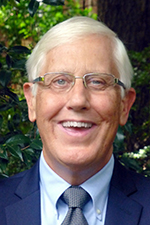

The art and science of beverage technology
BevTech® Proceedings are a benefit of membership for current ISBT members only and are subject to the BevTech Copyright (located at the bottom of the page).
You may use these links to jump to that committee.

Future of Natural Flavor Modulators for Sweeteners in Beverage Applications
Kerry Kenny
Apura Ingredients, Inc.
CTO
This presentation provides a technical insight on emerging natural flavors with modulating properties that improve the taste, mouthfeel and overall presentation of low and no calorie natural and artificial sweeteners in beverage applications.

Subcommittee Update - Craft Beverages
Caitlin Jamison
Rowdy Energy
VP of Research, Development & Quality
Consumers are looking for beverages that do more than just quench their their thirst. Functional beverages provide benefits for the users. However, providing the scientific backing for claims is important for consumer trust, safety, and protecting a brand. The world of clinical studies can be complex. The goal of this presentation is to provide useful information for the industry.
Presentation Not Provided

Natural Glycolipids
Paul Marquardt
LANXESS
Director of Americas Beverage Technology
Yeast, Mold and Bacteria can cause beverage products to perish, thereby reducing the shelf life of such products or goods. Preservatives are substances which protect beverages against spoilage as a result of attacks by such microorganisms. Current preservation systems used in acidic beverages (pH <4.6) generally rely on weak acid preservatives e.g. benzoic and/or sorbic acid. Consumer trends are driving the food and beverage industry to research natural preservative alternatives, which not only prevent products from spoiling and help extending shelf life, but are also perceived as being natural and healthier. Natural glycolipids do have the aforementioned, desired properties. They have been tested intensively in beverage applications on laboratory and pilot-plant scale and proven to be highly efficient — even more so than chemical preservatives. This presentation aims to provide you with information on the efficacy of a specific natural glycolipid against typical beverage spoiling microorganisms. It also tries to explain the proposed mode of action of natural glycolipids and outlines the potential fields of application.


Formulating True-to-Fruit
Ari Gastman
Firmenich
Principal Flavorist, Global Citrus
Dinah Diaz
Firmenich
Global Citrus Marketing Director


Navigating Clinical Trials for Functional Beverages
Caitlin Jamison
Rowdy Energy
VP of Research, Development & Quality
Chad Cook
Biofortis Research
Research Director

Subcommittee Update - Exempt from Certification Update and Caramel Coloring Update
Glen Dreher
D.D. Williamson
Sr. Product Development Scientist

Subcommittee Update — Preservatives
Paul Marquardt
LANXESS
Director of Americas Beverage Technology
Presentation Not Provided

Update on Beverage Institute Activities
Tom Reimer
Beverage Institute by ISBT®
Director of Education


State of Global CO2 Sourcing
Tim Morris
Air Liquide
Global Director, Carbon Dioxide and Beverage
Anuj Kumar
Air Liquide
Staff Scientist
A Discussion on the Evolution of CO2 Sourcing and Leveraging Non-Traditional Sources in the Future

The Impact of Covid on Certification Audits
Neil Coole
BSI Americas
Director - Food & Retail Supply Chain
How the Pandemic Has Affected the Certification Audit Process and What Can the Industry Expect Going Forward from This Point. The pandemic has disrupted the world of certification and audits, primarily from restricted movements and varying levels of lockdown around the world from the onset of COVID, however, important lessons were learnt in how to embrace innovative solutions, such as remote audits and wearable technologies. Additional impacts also effected the technical resources with the mass resignation, where organizations are relying more on audit partners to support and resource their internal audits and third party supplier risks assessments.

Group Discussion - Topics for BevTech 2023, ISBT, Beverage Institute Courses, Other Committee Business
Rome Brenneman
Pentair
Business Development
This presentation will provide ISBT Beverage Gases Technical committee members with an overview of the Compressed Gas Association's activities over the past year associated with gases used in food and beverages. For those unfamiliar with CGA, the presentation begins with discussion of what CGA is and does, followed by a brief description of CGA's interactions with other organizations, including ISBT. The presentation will provide an overview of the general contents of several CGA publications that may be of interest to committee members. The focus will be on the new and revised publications developed over the past year and those currently on the docket for review and development by CGA's Carbon Dioxide Committee and Food Gases Committee. I will also cover the non-publication activities of these CGA committees.
Presentation Not Provided

Beverage Gas Guideline Update
Bob Yeoman
B&R Compliance Associates LLC
President

Compressed Gas Update
John Willenbrock
Compressed Gas Association
Technical Manager

Beverage Institute Update — Plans for 2022 and Beyond
Tom Reimer
Beverage Institute by ISBT®
Director of Education





Foreign Object Detection and Prevention on Beverage Canning Lines
Brian Stegmann
ISBT
Executive Director
Steve Olhava
Peco InspX
Midwest & Southern Regions Sales
John Mojonnier
Mojonnier
Chairman Emeritus
Kevin Sweeny
Bevcorp LLC
Engineering / Product Specialist
David Scheuerman
Retired
Panel discussion by industry experts - wide-ranging discussion of current and advanced methods and practices to detect and prevent the inclusion of foreign objects and materials in beverages during canning.
Great care is taken during aluminum can manufacturing to assure empty cans are free of defects and debris. High speed advanced inspection technology is used to scan each can during the manufacturing process. Attention to cleanliness in empty can warehousing, transport, and protected depalletizing and single file can delivery to high speed rotary filling equipment is focused on preventing foreign object intrusion. These measures also apply to can end manufacturing, transport, and storage. However, once the filled can is discharged from the filler and before the end is applied, there is the potential and possibility that filling valve parts or other foreign material from can ends or undercover gassing may drop into the can and remain undetected until the can is opened by the consumer. Current and advanced methods of foreign object detection and related preventive maintenance procedures will be discussed in detail by the panel.
While improvements in liquid filler design has led to the utilization of sieves and filters to prevent foreign materials from passing into containers, there is no such thing as a perfect design. There will always exist a risk that hardware from these machines fails and ends up in the finished goods. As rare as these occurrences may seem, the general public has a "zero tolerance" perspective. Any incidence of foreign material has the risk to harm consumers, undermine confidence in the brand, and get plastered on social media. Control methods that include raw material inspection, preventative equipment maintenance, proper sanitation procedures, and generally good manufacturing practices will all help reduce this risk. In addition, any robust quality plan should also consider X-ray technology for real-time container inspection. X-ray inspection of filled containers has become a critical tool in the detection and prevention of foreign material in filled beverage cans at current production line speeds. These systems are able to take full container images in real-time and use sophisticated feature recognition and machine learning algorithms to identify which containers are normal and which are defective. The different X-ray signatures of various defects, such as shavings, clamps, trim rings, bolts, vent tubes, and glass, can all be detected by X-ray systems. Unlike metal detectors and vision systems, X-ray is able to identify defects regardless of the container material or product inside it. Cans, glass, plastic, and other materials can all be reliably inspected. X-ray systems today are capable of more than foreign material identification. These non-contact systems can simultaneously determine product volume levels, including foamed liquids and monitor the performance of each filler valve position, resulting in predictive reporting of maintenance and quality issues. This information is collected and analyzed in real time, at the discharge of the filler, allowing for instantaneous feedback. These systems can also inspect empty cans and bottles for defects such as inclusions, dents, inconsistent sidewall thickness, blisters, and more. Historically, OEMs have digitized their equipment but their data and information remained siloed. Now we're moving towards an interoperable world where this data transmission is electronic and instantaneous. New equipment like X-ray inspection systems are able to monitor and broadcast data throughout traditional SCADA systems, as well as the next generation of cloud production and management SaaS tools. A multitude of inspection technologies exist for detecting foreign material in food and beverage applications. To ensure product safety, this technology should be complemented by quality control practices such as HACCP and GMPs, and by ongoing training of personnel. With all of these tools in place, product quality can be improved and injury to consumers can be avoided.
This short presentation introduces areas which will be covered by an expert panel discussing the topic of "Foreign Object Detection and Prevention in Beverage Canning". Great care is taken during aluminum can manufacturing to assure empty cans are free of defects and debris. High speed advanced inspection technology is used to scan each can during the manufacturing process. Attention to cleanliness in empty can warehousing, transport, and protected depalletizing and single file can delivery to high speed rotary filling equipment is focused on preventing foreign object intrusion. These measures also apply to can end manufacturing, transport, and storage. However, once the filled can is discharged from the filler and before the end is applied, there is the potential and possibility that filling valve parts or other foreign material from can ends or undercover gassing may drop into the can and remain undetected until the can is opened by the consumer. Current and advanced methods of foreign object detection and related preventive maintenance procedures will be discussed in detail by the panel.

Sustainable Developments in Juice HTST Pasteurization
Antonio Aldini
JBT
R&D Manager
Sustainable and more energy-efficient juice pasteurization processes require a basic understanding of microbial stabilization, enzyme inactivation, product acidity, water activity, viscosity, and oxygen levels. In addition, thermal design factors are critical and will be explained and quantified, including F, P, D, Z and n values, with a comparison of major pasteurization guideline tables used in the USA and Europe. The dynamic interaction of these variables and their effects upon product organoleptic, chemical, and physical characteristics will be covered in the first part of this presentation. The second part of the presentation will describe the major pasteurizer types used in the industry today: tube-in-tube, plate, scraped surface, and a new technology called Ohmic Heating. Ohmic Heating is one of the most attractive technologies for food and beverage industry application because of its potential to use only "green energy". A practical case study will be presented covering liquid egg pasteurization. It will illustrate how Ohmic Heating can provide a huge benefit extending production time between cleaning cycles, enable more precise temperature control, and result in a significant reduction in process equipment utility cost.

Microparticles: Challenges, Sources, and Reduction in Beverage Lines
Joerg Zacharias
Krones AG
Expert
Intensive public debates are currently going on about the occurrence and effects of microplastics and microparticles in the environment. This also concerns producers and bottlers of beverages. But research is still in its infancy and often reliable scientific data are lacking. Many studies focus on water as it allows for a simple analysis due to its homogeneous, translucent and low viscous appearance compared to e.g. juices or solid food. But to this day no universal or standardized analytical method has been established to define microplastics and / nor microparticles concentrations or limits. Therefore, continuously monitoring of current research projects and results in the field of microplastics and microparticles is done.

Sustainable Composites Using Landfill Bound Materials
Keith Vorst
Iowa State University PFPC
Director, Polymer and Food Protection Consortium
Plastic production growth continues to raise public, private, and regulatory concern with increasing amounts of waste produced. It is estimated that 460 million tons of plastic waste will be generated by 2030. Traditionally, single-use plastics (SUPs) are sent to landfills or accumulate in terrestrial and marine environments. Consumer, retailer, and manufacturer awareness of accumulating waste has increased demand for new methods of diverting materials from waste streams as sustainability and landfill reduction goals continue. This study evaluated different strategies to fulfill the commitments of multiple public and private organizations to reduce landfill waste.

Blends of Post-Consumer Recycled Polyethylene (PCRPE) and Virgin Polyethylene of Different Densities: Impact on Polymer Properties
Victor Sanfins Cecon
Iowa State University
Graduate Research Assistant
The increased production and use of polyethylene (PE) for single use plastics and other applications, especially packaging, poses many challenges resulting in terrestrial and marine waste. As different government regulations and consumers' requests are pushing for more sustainable packaging, the general interest in recycled PE continues to gain momentum. Several processes have been developed to recycle PE; however, the impact of adding post-consumer recycled polyethylene (PCRPE) to different virgin feedstocks on final product performance can be further explored. To better understand PCRPE impact on polymer properties, a single source of PCRPE was melt blended with four different virgin PE grades at different concentrations (0, 20, 40, 60, 80, and 100 wt% of PCRPE), and changes in the physical, thermal, and mechanical properties were evaluated. Depending on the PE density, different trends and behaviours were observed, but most properties still followed the Law of Mixtures. For example, low-density PE's mechanical strength improved by up to 70% increase in tensile modules and 56% in yield strength. The density was increased by ~5%, and no toxic heavy metals (Cd, Cr, Hg, Pb) were found. The insights obtained when mixing polyethylene of different densities with a single recycled grade PE allow stakeholders in the plastic industry to gain a more comprehensive view of possibilities associated with PCRPE by tailoring products to optimal performance and maximum recycled content.

rPET Usage and Application Guidelines and Impacts
Lee Malvitz
Plastipak Packaging
Technical Manager
With increasing rPET usage and content in PET packages, the Sustainability Committee is developing rPET usage application guidelines and impacts. This will help to guide converters, brand owners, and packaging engineers with the goal of rPET integration into their bottles. The scope of this project is to address rPET resin and its conversion into PET bottles used for all applications. The Committee is also developing a white paper to illustrate additional details of this process.

Beverage Institute Updates
Tom Reimer
Beverage Institute by ISBT®
Director of Education

Beverage Quality 4.0 Featuring Sensory Panel and Instrument Combined QA Sensory Solutions
Rob McCaig
FlavorActiV
Director of Beverages North Amercia
Consumers are increasingly demanding and are not tolerating any off flavors hindering their drinking and eating experience. They are looking to optimize their experience and maximize their enjoyment.
For beverage producers and brand owners, sensory evaluation is essential for identifying potential defects, actioning improvements to their process, and ultimately staying competitive in the marketplace. Traditional methods have been to use specialist human sensory panels to deliver this evaluation, whilst instrument manufacturers have responded by creating innovations which monitor and analyze key performance indices.
With an ever-changing and developing landscape of QA sensory solutions, we consider how the combination of human sensory and instruments work more effectively together than individually. In this study, we will present the impact of using both QA sensory solutions in harmony, as well as the added reliability and accuracy that comes with it. We also explore the effect of sustainability through optimized beverage freshness and prolonged shelf-life, allowing for greater storage and logistics flexibility in the supply chain.

Instrument Advancements for Quality 4.0
Matt Garcia
Anton Paar
Industry Development Manager
The advancement with automation has automobiles driving by themselves. What allows the automobile drive autonomously is the measurement technology.
Applying the measurement systems to production lines can increase the bottling automation. Using the laboratory information can identify maintenance areas for filler valves just as one example.
Beverage production is no longer separated into lanes of alcoholic and non-alcoholic, so the adaptation to the variety of beverages needs to be versatile. Much of the same instrumentation employed for measurements today can be used to produce the uniqueness for tomorrow's beverage.
This presentation will examine some of the unique beverages and the measurement systems used to create consistent quality.

Improving Consumer Quality Experience
Maria O'Toole
Eolas International
Commercial Director
Product quality in the traditional sense, is no longer enough and today it is about the Quality of Experience. As the consumer progresses through a typical journey, no touchpoint is evaluated in isolation. Instead they evaluate a total branded experience as an aggregate of touchpoint experience and how well it delivers against their own expectations. Not all defects or issues with experience will have a negative impact on purchase intent and some consumers may punish a brand more for certain defects or issues over the other. Using scoring formulas to measure the impact of these experiences we can better understand the consumer quality experience and how this aligns with technical quality standards, or in some cases how wide the gap is between the two. Only when we have achieved a quality experience, can we deliver brand and product superiority within the marketplace.


Industry 4.0: Leveraging Real Time Data & Analytics to Drive Process Improvements
Philippe Bergeron
Decide4Action Inc
Chief Technology Officer
Scott Dozier
Decide4Action Inc
Vice President of Operations
Today's beverage manufacturers are constantly being challenged with increasing productivity and quality to stay ahead of the competition. One key way to improve productivity is to ensure you have the data needed to drive both immediate and long-term decisions within your operation. Traditionally, Food and Beverage companies employed paper-based record keeping to comply with traceability requirements. This type of recording is error-prone and difficult to leverage for data driven decision making. In more modern times, Industry 4.0 drove many operations to digitize their processes and to collect massive amounts of data. Due to the complex nature of modern processing, this is often driven by varying (and proprietary) formats which further complicate building a true picture of your operational performance. Furthermore, this can result in "information overload" when data is collected from everywhere and not put to good use. This presentation will outline how a "layer on top" of your existing infrastructure can be used to create a useable "Data Model" and generate KPIs which can be used to evaluate your productivity/quality.

Subcommittee Update
Matt Garcia
Anton Paar
Industry Development Manager
Presentation Not Provided

Wrap Up
Matt Garcia
Anton Paar
Industry Development Manager
Presentation Not Provided

Bev Institute — New Activities, Update on Fall Seminar, and More
Tom Reimer
Beverage Institute by ISBT®
Director of Education

Successfully Navigating Compliance: A Guide to Successfully Managing Equipment Compliance
Brunno Covolan
Intertek
Engineering Manager
Critical to a successful product launch is electrical safety and sanitation compliance. This crucial but overlooked deliverable often comes at the end of the product development cycle. Sadly and far too often, an unfortunate after thought resulting in unnecessary roadblocks and obstacles to timely product launches while increasing development costs. The harmonization of traditional North American standards and their international counterparts have aimed to minimize the compliance burden on product designers and manufacturers. This can be realized by having a thorough and comprehensive laser focused understanding of critical compliance requirements, leveraging an effective project development flow. This presentation will provide an overview of commonly anticipated roadblocks to the certification process and opportunities for improvements to help ensure first time success with your certification compliance authority of choice.

IBDEA
Amy Morgan Bruecks
City Carbonic LLC
Partner
ISBT and IBDEA are both associations committed to ensuring beverage safety and quality. In this presentation, Amy Morgan Bruecks will explain the mission of IBDEA to identify if there is an opportunity for the two organizations to collaborate together towards the common goal.

Carbon Dioxide Safety at Consumer Sites
John Willenbrock
Compressed Gas Association
Technical Manager
This presentation provides ISBT Retail Equipment and Fountain Technology Technical committee members with an overview of Carbon Dioxide safety at consumer sites such as restaurants where non-permanent and permanently installed carbon dioxide supply systems are used. For those unfamiliar with CGA, the presentation begins with discussion of what CGA is and does, followed by a brief description of CGA's interactions with other organizations, including ISBT. The bulk of the presentation is based on the information in • The recently revised CGA publication G-6.5, Standard for Small Stationary Insulated Carbon Dioxide Supply Systems; • The recently developed CGA publication G-6.13, Standard for Stationary Uninsulated Cylinder Supply Systems for Carbon Dioxide; and • The Standard for Carbon Dioxide Monitoring in Industrial and Near Consumer Applications; a new standard being developed by the CGA Carbon Dioxide Committee, that will hopefully be published this year. The presentation will also provide an overview of the general contents of several CGA publications that may be of interest to ISBT Retail Equipment and Fountain Technology Technical committee members.

Committee Intro
Kathy Magee
Lancer Worldwide
Director - Testing and Compliance

Beverage Institute Updates
Tom Reimer
Beverage Institute by ISBT®
Director of Education

Preventing Spoilage in Beverages
Adam Joelsson
BIOMERIEUX
Senior Director, Technology - INVISIBLE SENTINEL
Beverage products with natural ingredients present a complex array of microbiomes, including spoilage organisms, that can cause important economic losses and deteriorate brand images in this industry. By utilizing sequencing applications supported by advances in bioinformatics and data science, new predictive monitoring tools will enable beverage companies to ensure great taste and freshness in their products. This presentation will touch on how these novel approaches guide the development of new multiplexed, molecular diagnostic assays targeted against spoilage-specific microbes, ultimately empowering producers to take swift actions that can protect flavor, prevent false-positives, and save product.

Cleaning and Sanitation in Food and Beverage Manufacturing Operations
Denny Heldman
The Ohio State University
Professor
Cleaning/sanitation is a critical operation in any food and/or beverage manufacturing operation. Proper completion of this operation has direct impact on the safety and quality of the product and impacts the overall efficiency of processes with potential impacts on quality of the environment. The overall objective of this presentation is to highlight current and recent research being conducted on cleaning and sanitation operations. Although a significant volume of published research on cleaning of food-contact surfaces has been assembled over the past 50-60 years, more recent emphasis has been placed on the mechanisms associated with creation of the residues to be removed during the cleaning process. A more thorough understanding of these mechanisms should lead to improved efficiencies in cleaning and sanitation. The High-Pressure-High-Temperature-Quartz-Cristal Microbalance with Dissipation (HPHT-QCM-D) is the latest instrumentation to be adapted for the study of fouling and cleaning of surfaces. The outcomes from the instrument at nanoscale can be scaled-up to a unique pilot-scale system to confirm and understand the attraction between components of a food or beverage and the surface to be cleaned. These outcomes are then translated into the more efficient ways to clean the food-contact surfaces. An improved understanding of the mechanisms associated with cleaning and sanitation is important background information for reducing the quantities of water and cleaning/sanitizing agents required, as well as the time for these important operations. Collaboration with the suppliers of cleaning and sanitizing agents, and the operators of cleaning/sanitation operations in food and beverage operations is an important to reducing impacts of food/beverage manufacturing on the environment.

Multispecies Biofilms
Diane Walker
Montana State University
Research Engineer
In both the natural and man-made world, bacteria (and other microorganisms) live in communities associated with some form of interface, i.e., air-liquid, air-surface, liquid-surface, in an environment where there is protection from the elements (like sanitizers). This comes from biofilm-formers whose self-produced extracellular components provide protection that may be even more enhanced by the presence of others. Communication, cooperation and their influence on the effectiveness of antimicrobial treatments will be presented.

Reuse and Reclamation of Cleaning Agents from Food and Beverage Manufacturing Operations
Denny Heldman
The Ohio State University
Professor
The significant impacts of food and beverage operations on environmental quality are due to the waste streams from these operations. Significant portions of the waste streams are the agents used for cleaning and sanitization of food-contact surfaces within the manufacturing facility. More efficient use of the cleaning and sanitizing agents would result in reduced impact on the environment. The overall objective of this presentation is to discuss outcomes from recent research on the reuse and reclamation of cleaning agents from food and beverage manufacturing operations. The reuse of cleaning solutions is not a new concept but may not be well understood or managed. In general, the effectiveness of the cleaning agent declines with each use and the number of uses must be established for each type of operation. The reclamation of a cleaning agent can be accomplished through application of reverse osmosis; a relatively energy-intensive and costly intervention. An alternative to reverse osmosis is forward osmosis (FO), combined with direct-contact-membrane-distillation (DCMD). The opportunities for use of FO-DCMD will be discussed, with emphasis on the reclamation of cleaning agents and water from the waste streams from cleaning/sanitation operations. The opportunities for reducing the impact of food and beverage manufacturing operation on the environment are unlimited. By increasing the reuse and reclamation of cleaning and sanitizing agents, the volume and the composition of the waste streams from these manufacturing operations can be minimized, and the impacts on the environment will be reduced significantly. Responding to these challenges can benefit from collaboration among researchers, suppliers and users of cleaning and sanitizing agents.

Prior Product Restrictions
Bill Kennedy
Carry Transit
VP of Compliance & Training
Bill will be reviewing guidelines in our ISBT sweetener programs along with guidelines from JPA. We have had several members ask if it is time to update our guidelines to assist with sustainability of reloading tankers.

Sustainable Solutions for Stevia
Hank Wang
Nascent Health Sciences
Technical Director
Innova, FMCG Gurus and IFIC data show how consumers feel about sustainability. They are concerned about the environment and want to protect it by reducing the carbon footprint and have less un-needed packaging. Claims on the package do help them decide but they must be believable and within their price/value equation. IRI shows that consumers are willing to pay a premium for sustainably-marketed products. Stevia is more sustainable than cane sugar due to the fact that it is about 250x sweeter than sugar. Stevia is also compared to several other sweeteners like HFCS, monkfruit, sucralose, APM and AceK. Howtian's (Nascent parent company) sustainability program has a goal to increase the sustainability of extract, particularly Reb M. We are investing in agronomy to increase yields and efficiency, as well as reducing our carbon footprint.

Driving Innovation Through Responsible Sourcing
Carla Saunders
Cargill Inc.
Sr. Marketing Manager
Learn why responsible sourcing matters and what sustainability issues resonate best with consumers. Then come along as we explore how Cargill has prioritized sustainable, ethical production throughout its stevia supply chain, encompassing both leaf-based and fermentation-derived approaches. As part of this discussion, we'll compare different production systems, using validated life cycle analysis to evaluate environmental impacts, and investigate how ingredient sourcing can help food and beverage brands achieve their broader sustainability goals.


Remote Auditing
Mark Williams
Ingredion Inc.
Senior Engineer
Olu Babarinde
Ingredion Inc.
Manager, Supplier Quality & Supply Chain Quality Systems
The COVID pandemic changed the world and working remotely from our homes became the norm. For many of us the demands and functions of our roles did not change and likely increased. This presentation covers how off-the-shelf technology was combined and used to be able to continue to provide support to the beverage industry despite restrictions created by the pandemic. Audits, inspections, and troubleshooting that would previously have been necessary or likely mandated to be performed in person was able to be conducted remotely. The ongoing acceptance of providing expertise using digital means suggests a new standard of support for the food industry is being established and accepted.

TC Initiatives and Beverage Institute Updates
Andrea Belford
Food Science Professional
Food Scientist

Reducing BOD Discharge from a Beverage Manufacturing Facility Using Bioaugmentation
Anthony Amendola
SUEZ Water Technologies & Solutions
Business Development Manager
A beverage manufacturing facility was experiencing large surcharges due to BOD loads discharged to the local POTW. Instead of having to construct a new secondary wastewater treatment plant which would have been a large capital expense, this facility ran a trial utilizing bioaugmentation chemistry which resulted in a nearly 40% reduction in BOD without any additional capital infrastructure expenditure.

Opportunity for BOD Source Reduction in Production
Alan Sheppard
Beverage Recovery Systems
Global Director, Business Development
BOD in beverage plant discharge is a significant impact on operating budget due to treatment costs, surcharges and changing regulations. Best way to manage BOD is to not produce it. This paper will discuss how producers can target such BOD sources in process and limit spillage and discharge into effluent.

TC Major Initiatives — Barriers of Separation
Doug Glanz
ChemTreat
Senior Technical Consultant - Pretreatment
Multiple Subcommittees: Variety of source water quality variations, plethora of regional as well as global specs have made treatment process selection very complicated. This Guideline is designed to address a simple "plug 'n play" approach in developing Barriers of separation to ingredient water


Disinfection of Beverage Treated Water Systems Using Ozone
Don Lanini
Evoqua Water Technologies
Solution Architect
David Bridgers
Evoqua Water Technologies LLC
Technical Sales Manager - Disinfection
Ozone is a powerful option for disinfection of beverage treated water systems. On June 26, 2001, the FDA published a final ruling in the Federal Register approving ozone as an additive to kill foodborne pathogens. The use of ozone is gaining momentum in the food and beverage industry and is steadily replacing conventional sanitation techniques such as chemicals, steam, and hot water. Case studies will be presented

PFAS — Best Practices White Paper
Ronit Erlitzki
AdEdge Water Technologies Chart
Director of Business Development & Innovation
PFAS PFOAS have gained a lot of interest in the food and beverage industry and more recently with regional regulators. This paper discusses the definition, prevalence, monitoring methods, treatment options and other relevant information useful to any beverage producer who must consider managing these compounds in their plant.

BevTech Institute Update
Tom Reimer
Beverage Institute by ISBT®
Director of Education